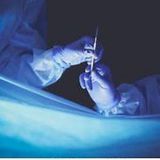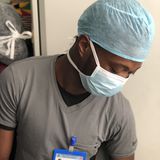
Limb girdle muscular dystrophy is a genetically heterogeneous group of rare muscular dystrophies characterised by progressive muscle wasting which affect predominantly hip and shoulder muscle and have autosomal pattern of inheritance. Treatment is physical therapy to muscle strength or joint flexibility, caliper to maintain mobility and quality of life, occupational therapy, respiratory therapy, speech therapy.
Corticosteroid in LGMD 2C-F individual show some improvements but currently has no known cure or treatment.
Limb-girdle muscular dystrophy (LGMD) is a diverse group of disorders with many subtypes categorized by disease gene and inheritance. LGMD usually manifests in the proximal muscles around the hips and shoulders. (The proximal muscles are those closest to the center of the body; distal muscles are farther away from the center
The shoulder girdle is the bony structure that surrounds the shoulder area, and the pelvic girdle is the bony structure surrounding the hips. Collectively, these are called the limb girdles, and it is the observed weakness and atrophy (wasting) of the muscles connected to the limb girdles that has given this group of disorders its name.
Individuals may first notice a problem when they begin to walk with a “waddling” gait because of weakness of the hip and leg muscles. They may have trouble getting out of chairs, rising from a toilet seat or climbing stairs. As this weakness progresses, the person may require the use of assistive mobility devices.
Weakness in the shoulder area may make reaching over the head, holding the arms outstretched or carrying heavy objects difficult. It may become increasingly hard to keep the arms above the head for such activities as combing one’s hair or arranging things on a high shelf. Some people find it harder to type on a computer or other keyboard and may even have trouble feeding themselves.
No specific treatment is available for any of the LGMD syndromes, though aggressive supportive care is essential to preserve muscle function, maximize functional ability, and prolong life expectancy. Aggressive use of passive stretching, bracing, and orthopedic procedures allow the patient to remain independent for as long as possible. Orthopedic surgery may be needed to help correct or prevent contractures and scoliosis.



